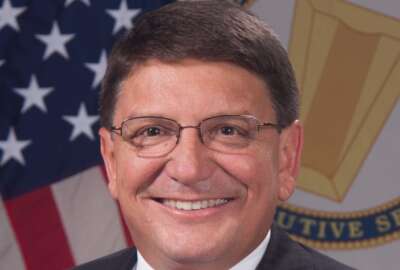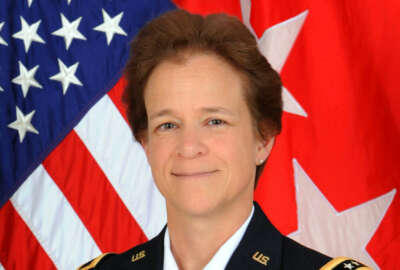
Federal Labs Consortium honors a leader of Army infrastructure research
Each year the Federal Laboratory Consortium, the network of the government's technology transfer operations, honors one of its members as laboratory director of the...
Best listening experience is on Chrome, Firefox or Safari. Subscribe to Federal Drive’s daily audio interviews on Apple Podcasts or PodcastOne.
Each year the Federal Laboratory Consortium, the network of the government’s technology transfer operations, honors one of its members as laboratory director of the year. This year’s honoree directs the Army Engineer Research and Development Center’s Geotechnical and Structures Laboratory. Bartley Durst spoke to the Federal Drive with Tom Temin.
Interview transcript:
Tom Temin: Mr. Durst. Good to have you on.
Bartley Durst: Good morning. Glad to be here.
Tom Temin: Well give us the architecture here. You are a geotechnical and structures laboratory of the Army Engineer Research and Development Center. Talk about the center first and what happens there with respect to Army research.
Bartley Durst: Certainly, well, the Engineer Research and Development Center or ERDC is the R&D component of the U.S. Army Corps of Engineers. We have seven laboratories across the country. And we’re headquartered in Vicksburg, Mississippi, which is where my laboratory, the geotechnical and structures laboratory is located. A little history, the ERDC is approaching 100-years-old. It was founded after the Great Flood of 1927. Its main purpose was in hydraulic flood control types of concerns as the nation addressed that problem. So over the many decades, it is evolved a great deal, we do a combination of both military and civil works infrastructure research supporting the nation and the warfighter. Those seven laboratories, as I mentioned, four are located in Vicksburg, Mississippi, one in Champaign, Illinois, one in Hanover, New Hampshire and also one in Fort Belvoir, Virginia.
Tom Temin: All right. And your specialty is geotechnical and structures. Tell us more about that.
Bartley Durst: Yes, so we originated as two of the original laboratories early in the history of ERDC and have been combined into the geotechnical and structures laboratory. We do a mission supporting the nation in both military engineering, technology development, as well as support to our nation’s civil works infrastructure, and military transportation infrastructure. So a combination of largely military R&D, but also civil R&D for the classical Corps of Engineers mission space,
Tom Temin: What are some of the geotechnical items and structures? I mean, is it bridges? It sounds like things of the built nature?
Bartley Durst: Yes, absolutely. So in the civil work side, we work with levees, bridges, navigation structures, such as locks and dams. And that has been the founding component of our laboratory, the GSL. But since World War II, we’ve also been heavy in military engineering. This military support to Department of Defense, to the Army, many other agencies is around force protection technologies, solutions that protect against weapons effects, and other physical security matters for our armed forces, as well as force projection, the ability to project our forces globally by air, land and sea, such as airfields, ports, rail and bridges, that type of transportation infrastructure, and making advancements in those capabilities for our armed forces.
In the civil infrastructure side, as I mentioned, it’s things around building with soil, as well as concrete and steel. So with that, that’s our levees and other water resources, infrastructure, mainly in preventing ways in which the infrastructure may fail, or ways in which we can improve its performance.
Tom Temin: Sounds like your group must have had a hand in the B-29 landing strips on Tinian way back in World War II to get those heavy bombers close to Japan.
Bartley Durst: That’s right, as well as many other developments in airfield capabilities to repair damaged airfields, putting landing mat, that originated here in this laboratory, such as in the Korean and Vietnam era, and so forth. So lots of work and expertise, world class expertise and facilities here to support that capability and getting it fielded to the soldiers.
Tom Temin: We’re speaking with Bartley Durst, he’s director of the Army Engineer Research and Development Center’s, geotechnical and structures laboratory in Vicksburg, Mississippi. And also, he’s the lab consortium’s lab director of the year and I imagine the technology for the engineering work has changed a lot over the years. It’s software based as opposed to a slide rule and testing things until they break type of operation?
Bartley Durst: That’s true. Over the years, it originated in a lot of physical modeling and physical experiments in sub-scale as well as full scale that gets quite costly as well as takes a lot of time. Over the years now with great advancements in computing it’s a combination of precision laboratory experiments, still doing full scale experiments in the field, but heavily relying on advancements and numerical modeling. We have some of the world’s fastest supercomputers here, a high performance computing capability in which numerical modeling and big data analytics can be executed to produce the solutions faster and better, as well as quicker. Great advancements in our R&D capabilities.
Tom Temin: And what are some of the technology transfer activities? Because that’s what the lab consortium is concerned with. How does that work there where you are?
Bartley Durst: Yes, so I’ve done a lot in terms of instilling a culture of technology transfer. Technology transfer is actually getting inventions and other capabilities commercialized to go into production, mass production results and creating jobs, which is great for this nation’s economy, but also, for the user, our warfighter and civilians, it allows us to get access to these solutions at a more reasonable cost, quicker turn around on getting the materials deployed. And it also creates a spiral development loop in which new improvements and new advancements get incorporated quicker into the system. So it’s a very healthy arrangement for our researchers to let their baby go and get into the private sector, and get that production capability that it then includes getting it into the field better. All of this, making the world safer and better, is part of our motto here.
Tom Temin: And you are the lab director. Are you an engineer and tell us about your background and how you came to this particular perch?
Bartley Durst: Yes, I am an engineer. I’m a civil engineer with specialty in structures and geotechnical engineering, and also a lot of experience in sensor physics, and sensing the environment. So I started with the federal government as an intern when I was in my undergraduate studies. So now I have about 39 years of federal service. I’ve been a senior executive here as I’ve moved into the leadership roles for the last six years. So with that, I started with an appetite for technology transfer. I have over 20 patents throughout my career ranging from camouflage, concealment and deception types of solutions for sensor work, as well as protection around survivability and protective structures. With that I lead a fantastic team of engineers and scientists who have taken the examples I’ve given them, and they fully understand the benefits of technology transfer, capturing their intellectual property quickly. And working with our Office of Research and Technology Transfer here at ERDC to get things patented, where appropriate, as well as pushing out refereed publications.
With that, I’ll also say we’ve established a program intermediary agreement with an organization called ERDC Works. ERDC Works has done a great job at moving beyond the typical way of advertising for licensing the patents. Typically, through the FedBizOpps, Federal Business Opportunities, publication. We have worked with ERDC Works to establish tech challenges that increase marketing to the private sector awareness of these opportunities for industry. And it’s been quite fruitful. And we’re looking and excited about the growth of that capability, which is really putting a lot of technology out there to the user quickly.
Tom Temin: And knowing what you know about structures and some of the patents that you have, I imagine you’re the go-to guy if someone wants a really good hunting blind.
Bartley Durst: As a matter of fact, I have been approached about that several times and some of our patents from the federal government have spun off to produce things for that sector of our society, especially in camouflage and deception. We do a lot of duck hunting and other hunting activity down here in the Deep South. So very pleased with that.
Tom Temin: Sounds fantastic. Bartley Durst is director of the Army Engineer Research and Development Center’s geotechnical and structures laboratory. He’s also the federal lab consortium’s lab director of the year. Thanks so much for joining me.
Bartley Durst: Thank you, Tom.
Copyright © 2024 Federal News Network. All rights reserved. This website is not intended for users located within the European Economic Area.
Tom Temin is host of the Federal Drive and has been providing insight on federal technology and management issues for more than 30 years.
Follow @tteminWFED




